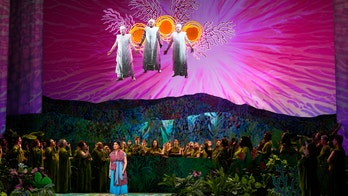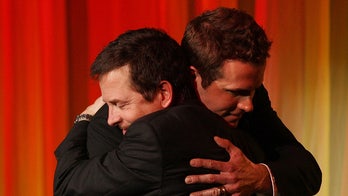Retired LAPD detective thinks his father killed the Black Dahlia
Retired LAPD detective Steve Hodel says he stills loves his father Dr. George Hodel — the same man he believes committed one of the most infamous murders in America.
Retired LAPD detective Steve Hodel says he stills loves his father, Dr. George Hodel — the same man he believes committed one of the most infamous murders in America, the so-called Black Dahlia murder.
“To this day I love my father,” he recently told Fox News, ahead of the upcoming podcast “Root of Evil: The True Story of the Hodel Family,” in which he will be participating. “How do you unlove someone who’s created you? That part of him I love, the other monster part, of course, is a whole different matter."
Elizabeth Short was a small-town girl who first showed up in Los Angeles during the 1940s with dreams of becoming a movie star. However, she would only receive fame in death. Her naked corpse was found in a vacant lot on Jan. 15, 1947. The 22-year-old had been scrubbed, cut in half and drained of blood. She had been viciously mutilated and a joker’s smile had been carved on her face.
Hodel, who served in the LAPD for nearly 24 years from 1963 until his retirement in 1986, has long insisted his father was Short’s killer. He once told People magazine his father dated Short at one point and was allegedly motivated by jealousy.
Shortly after his father’s death in 1999 at age 91, he went through his belongings and discovered photographs he believed were of Short, The Guardian reported, and this compelled him to spend decades looking for evidence that proved his father killed the Massachusetts native.
"To me, it’s been about getting to the truth of it. That’s where I’m coming from," said Hodel, who is 77 today.
"Right now, it’s a terrible sadness. This man could have done so much good for humanity. Unfortunately, he had a dark side. He had a monster within… I’ll never not be able to stop loving the father,” he added.
According to The Guardian, Steve combed through witness interviews and newspaper archives, filed a Freedom of Information Act to retrieve FBI files on the case and other information the bureau had collected on his father.
Hodel saw that crime scene photos showed that Short was given a hemicorporectomy, a procedure that “slices the body beneath the lumbar spine, the only spot where the body can be severed in half without breaking bone.” He argued the procedure was taught in the 1930s, the same time period when his father would have been in medical school.
“I knew dad had some problems,” said Hodel. “He was sexually obsessed. He’d been married five times, had 11 children by five different women. I knew that. But a killer? No way.
"I started looking into [the evidence] and discovered that a surgeon must have committed the crime. Well, dad was a skilled surgeon. … And I’ve had five various independent surgeons say this had to have been the work of a surgeon, a skilled doctor.”
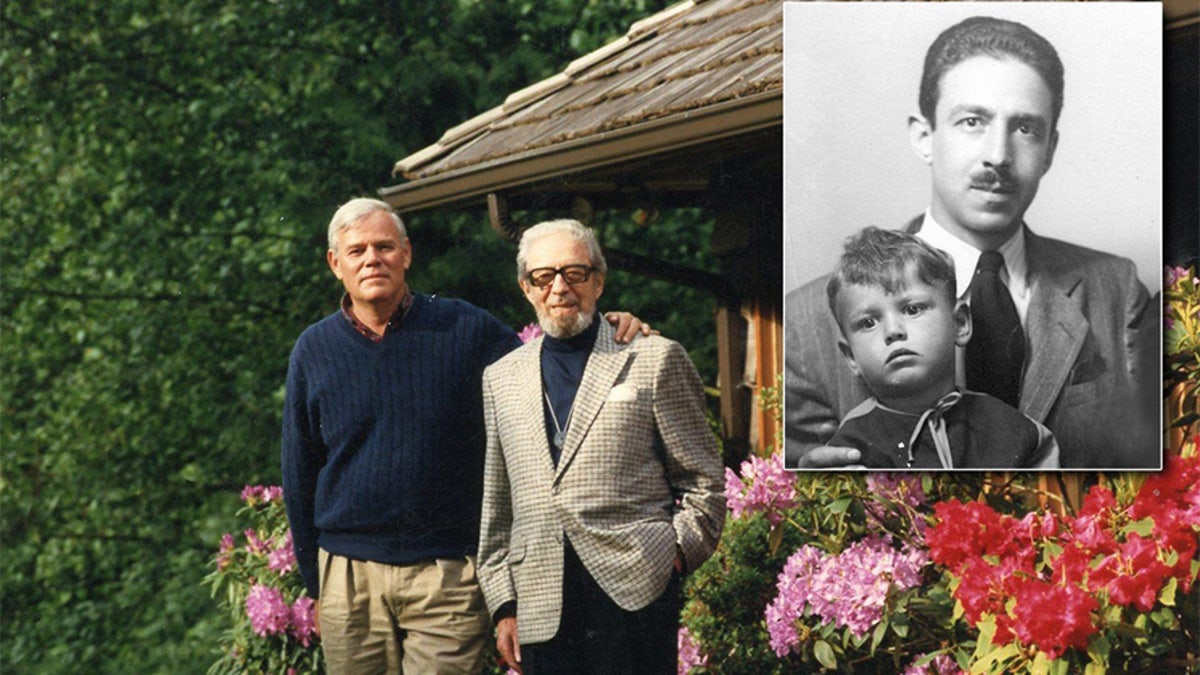
Steve Hodel with his father George Hodel in 1943 and 1995. (Courtesy of Steve Hodel)
RETIRED LAPD DETECTIVE CLAIMS UNEARTHED LETTER LINKS HIS FATHER TO BLACK DAHLIA SLAYING
In addition to the podcast, on Jan. 28, TNT will premiere the miniseries “I Am the Night,” which touches on the Black Dahlia murder as it tells the story of Dr. Hodel's teenage great-niece, Fauna Hodel, teaming up with a reporter to search for her birth parents. The pair eventually close in on Dr. Hodel.
Town & Country reported the series is based on the memoir “One Day She’ll Darken,” which was co-written by the real Fauna.
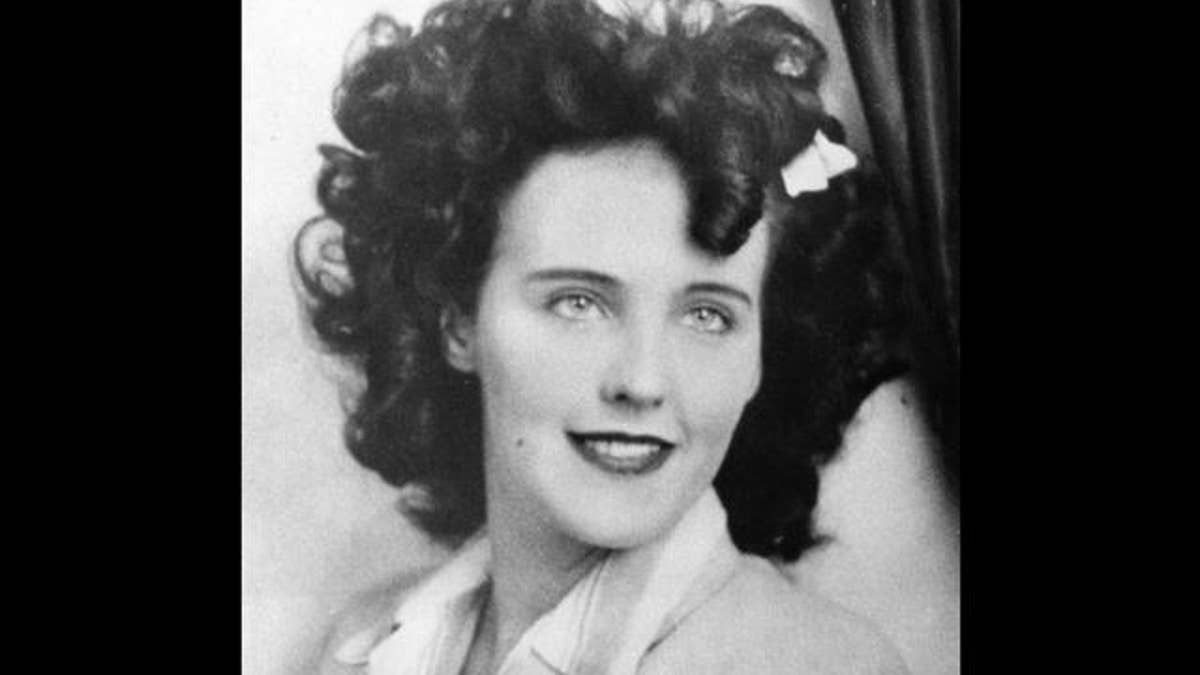
Elizabeth Short, 22, was killed in 1947 in one of the greatest unsolved murders in Los Angeles history. The aspiring actress was nicknamed the "Black Dahlia" in media reports at the time. (AP)
The Black Dahlia murder fascinated the media for generations. In 2003, Steve Lopez, a columnist for the Los Angeles Times, asked the Los Angeles County district attorney’s office for more information on the Black Dahlia case to fact-check his column, which focused on Hodel’s then-newly released book about his findings. As he was reading through police transcripts, Lopez found out Dr. Hodel’s home had been bugged by the district attorney’s office.
The recordings allegedly showed George bragging, the Smithsonian Magazine reported.
“Supposin’ I did kill the Black Dahlia. They couldn’t prove it now. They can’t talk to my secretary anymore because she’s dead.” It’s unknown whether George knew he was being heard and decided to taunt police or if he was confessing to his potential involvement.
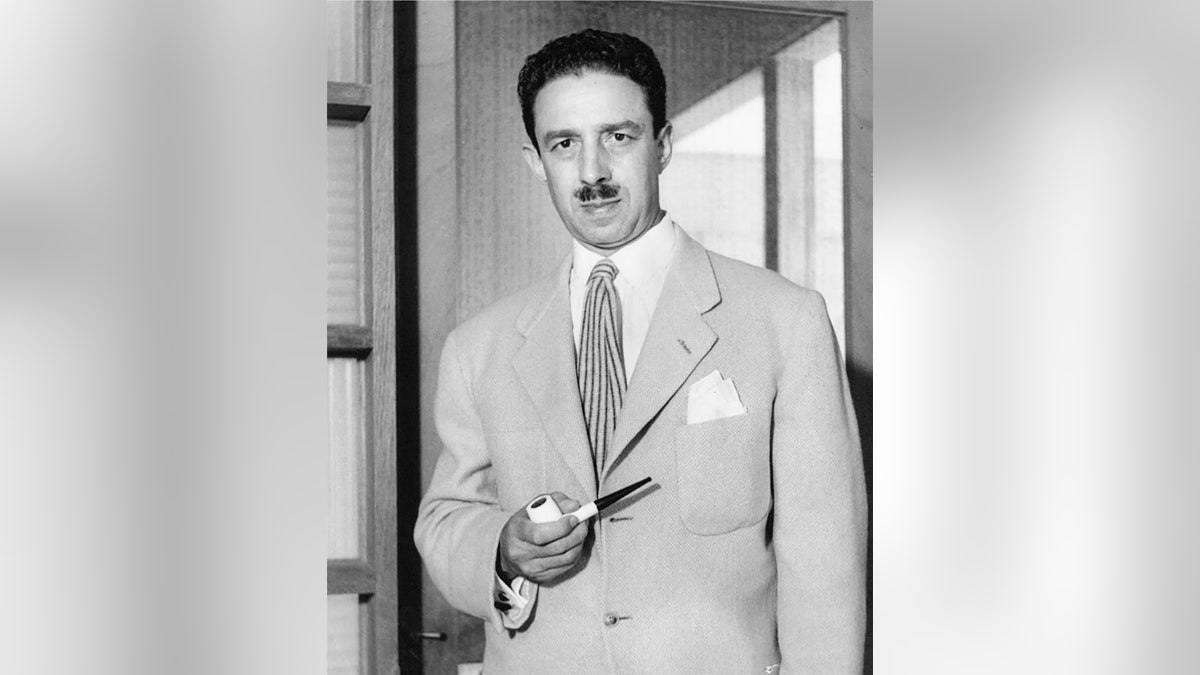
Dr. George Hill Hodel, 1950. (Courtesy of Steve Hodel)
Police didn’t build their case and arrest George at the time because he skipped town without his family in 1950 and ended up in the Philippines, where he lived for the next 40 years.
But Hodel believes his father also had other means of protection: he reportedly ran a high-end abortion business, was reportedly well-educated on the sexual histories of the Los Angeles elite – including cops – and therefore could have used the information as blackmail.
“They had a phrase back in ’40 called ‘high jingo,’” said Hodel. “High jingo was an untouchable and dad was exactly that. He was untouchable. … He was the go-to guy for abortions, which of course was a felony back then.”
'BLACK DAHLIA' BREAK? CADAVER DOG MAY HAVE PICKED UP SCENT

Steve Hodel, 1965. (Courtesy of Steve Hodel)
A significant break did take place in October 2018, when The South Pasadenan reported Hodel got access to a handwritten letter by W. Glenn Martin, a late undercover informant for the LAPD during the 1940s.
Martin reportedly penned the detailed message 69 years ago to protect his then-teenage daughters, whom he feared could be harmed over him knowing too much about the case.
The three-page letter, dated Oct. 25, 1948, reportedly identified “G.H.” as the Black Dahlia’s killer, as well as the likely suspect in the murder of Louise Springer, a 28-year-old who was abducted and strangled in 1949.

In October 2018, The South Pasadenan reported Steve Hodel received access to a handwritten letter by W. Glenn Martin, a late undercover informant for the LAPD during the 1940s. (Steve Lawrence)
The letter was discovered in July by Martin’s granddaughter, Sandi Nichols, tucked away in her late mother’s belongings. The 62-year-old, who was unfamiliar with the murder cases described in the letter, searched the Internet for answers and found Hodel, according to the South Pasadenan. The letter is included as an afterword in Hodel’s latest book, “Black Dahlia Avenger III.”
But not everyone agrees with Hodel’s theory. In late 2017, British lawyer Piu Eatwell told Fox News she may have solved the mystery of the infamous murder. In her book, “Black Dahlia, Red Rose,” Eatwell attempted to shed light on Short’s killing based on legal documents from the case, letters and grand jury testimony. Eatwell also tracked down some of the last living people with direct knowledge of the events at the time,
Based on her findings, Eatwell claimed it was an ex-boyfriend, who was a former mortician’s assistant, who did it.
Eatwell went on to insist that Leslie Dillion, an aspiring writer, allegedly preserved newspaper clippings about violence against women. Short’s friend Ann Toth and model Ardis Green reportedly identified Dillon as one of Short's boyfriends.
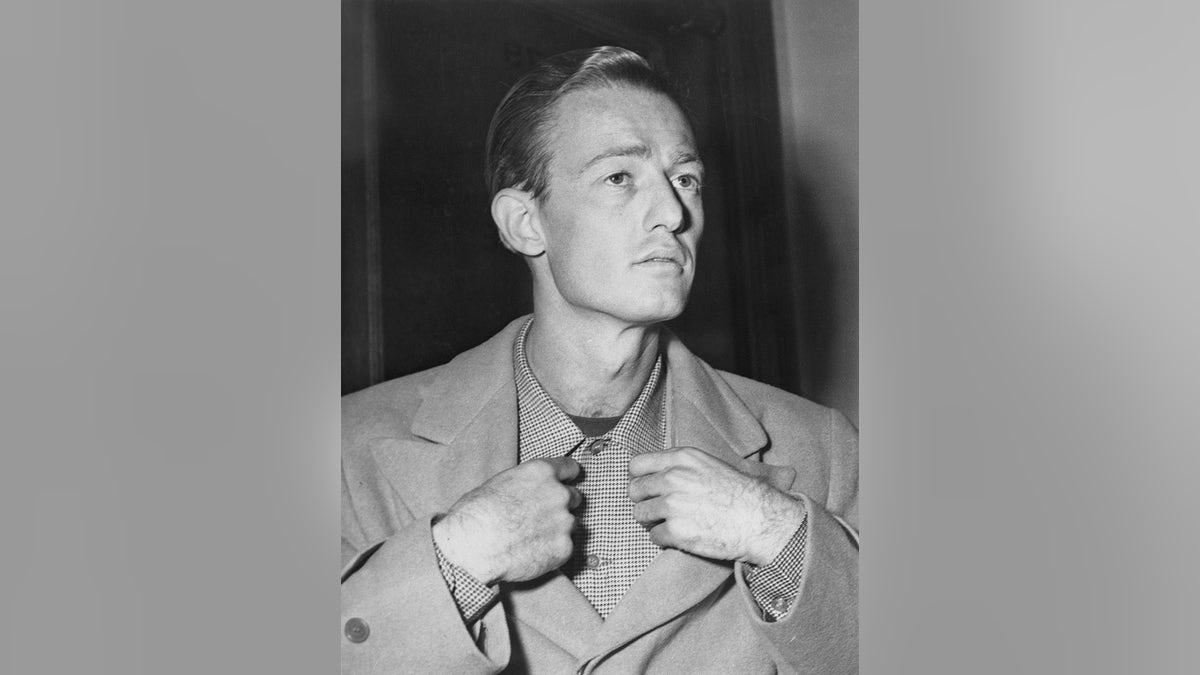
Leslie Duane Dillon. (Getty)
The Los Angeles Times reported in 1949 that Dillon was released by police due to lack of evidence. He would go on to live a relatively quiet life until his death in 1988 at age 67.
“He was looked at,” said Hodel on Eatwell’s theory. “There were a whole bunch of suspects who were looked at. Leslie Dillon never knew Elizabeth Short. He was cleared by the investigation. He was in San Francisco at the time of the murder. … It’s all smoke and mirrors as far as Dillon being a suspect. He contacted the LAPD and had his own ideas of who might have done it. … But he was absolutely eliminated 100 percent, no question about it.”
In response, Eatwell told Fox News that she didn’t find any evidence during her research that linked George to Short’s slaying.
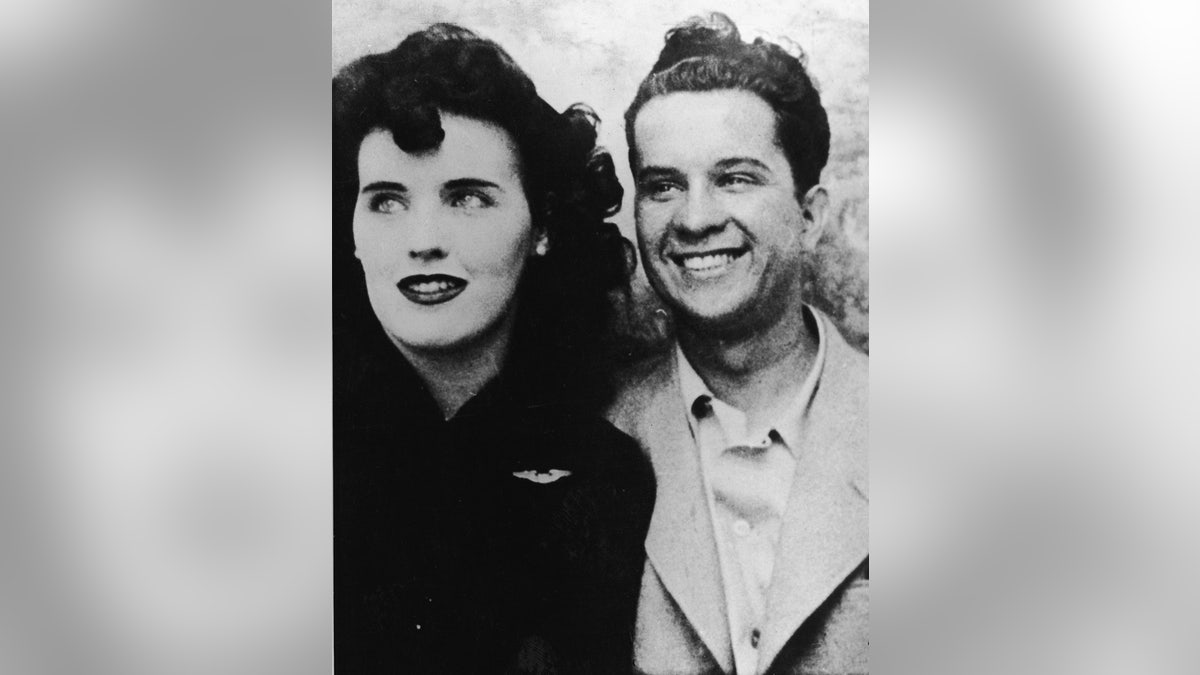
Photograph probably taken in a photo booth of American aspiring actress and murder victim Elizabeth Short (1924 - 1947), known as the 'Black Dahlia,' and an unidentified man, mid-1940s. Some experts believe this man to be a suspect in the still unsolved murder. (Getty)
“I don’t see any concrete evidence to link George Hodel with the murder and plenty (which is all cited in the extensive footnotes to my book) to link Leslie Dillon... to it,” she wrote.
CLICK HERE TO GET THE FOX NEWS APP
In 2003, The Washington Post reported Short’s family said the photos that originally launched Hodel’s investigation aren’t of Elizabeth. Hodel told Fox News one of the photographs he found turned out to be retired actress Marya Marco, an acquainted of George’s. The other photo, he said, still remains in question.
The Smithsonian Magazine also pointed out the media’s attention on Hodel’s findings also dwindled with time after he argued George could have also been responsible for the Zodiac murders, which occurred in California in the late 1960s and early 1970s.

Steve Hodel today. (Ed Evans, courtesy of Steve Hodel)
Hodel said he originally launched his investigation to learn more about his father, a man he would only get to better know towards the end of his life. He added his years of extensive research in hopes of uncovering the truth should speak for itself.
“Part of my investigation wasn’t just, ‘Did he kill the Black Dahlia?’” said Hodel. “Part of me, the son who loved his father, wanted to know more about who he was. My father was a secretive, mysterious man — but I’m wired to find the truth.”
Short’s horrifying demise continues to fascinate Hollywood. She was the subject of a 2006 film directed by Brian De Palma, starring Scarlett Johansson and Hilary Swank. It also inspired FX series “American Horror Story” in 2011, with Mena Suvari playing Short. Her murder remains unsolved.


